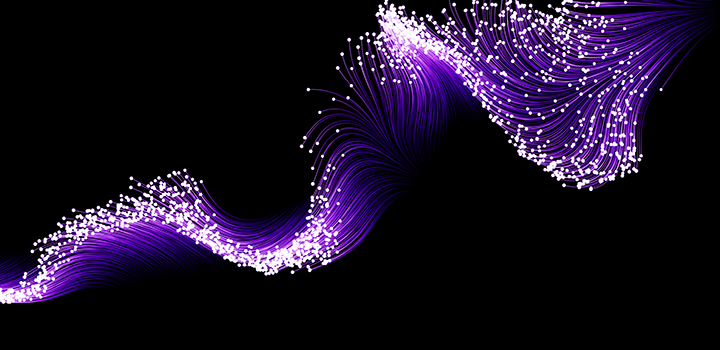Emeritus professor awarded prestigious Institute of Physics award
By: Communications

Emeritus Professor David Andrews has been named joint winner of the prestigious 2023 Institute of Physics Thomas Young Medal and Prize, alongside Prof Ventsislav Valev at the University of Bath for their discovery of chirality-sensitive optical harmonic scattering, first predicted theoretically in 1979 and demonstrated experimentally 40 years later.
In 2019, Prof Ventsislav Valev’s team published the first experimental results on effects predicted by David Andrews in 1979. The work demonstrated that upon illuminating chiral (twisted) nanoparticles with circularly polarised light, the intensity of light scattered at the second-harmonic frequency can reveal the direction of twist within the nanoparticles. This effect is considered to be of fundamental scientific importance, as it is the most direct expression of chirality, in nonlinear optics; it could also pave the way for wide-ranging applications in materials science and new drug technology.
The Thomas Young Medal has been awarded since 1941 for contributions to the science of optics. On receiving this award, Prof Andrews said: “It is a tremendous honour to be a joint recipient of this award, and a special delight to share it with Professor Valev whose experiments finally unlocked the potential of UEA work on such optical effects.”
The Institute of Physics (IOP) is the professional body for physics and the leading body for practising physicists in the UK and Ireland; the IOP Awards celebrate physicists at every stage of their career; from those just starting out, physicists at the peak of their careers, and those with a distinguished career behind them.
Prof Andrews’ work at UEA has spanned a career of more than 40 years, resulting in more than 400 research papers. He is a Fellow of the Institute of Physics, the Royal Society of Chemistry, Optica, and SPIE – the international society for Optics and Photonics.
Related Articles

Innovation and Impact Awards now open for entries and nominations
The Innovation and Impact Awards are back for 2025 and looking to recognise and reward UEA’s most game changing staff, students, and graduates, and their collaborative work with partners outside the University.
Read more
How quantum light sees quantum sound
Researchers at the University of East Anglia have proposed a new way of using quantum light to ‘see’ quantum sound.
Read more
How nitrogen-fixing bacteria sense and respond to iron
Researchers in the School of Chemistry at UEA have taken an important step forward in understanding how a group of bacteria that include nitrogen-fixers and important animal pathogens sense the essential micronutrient iron.
Read more